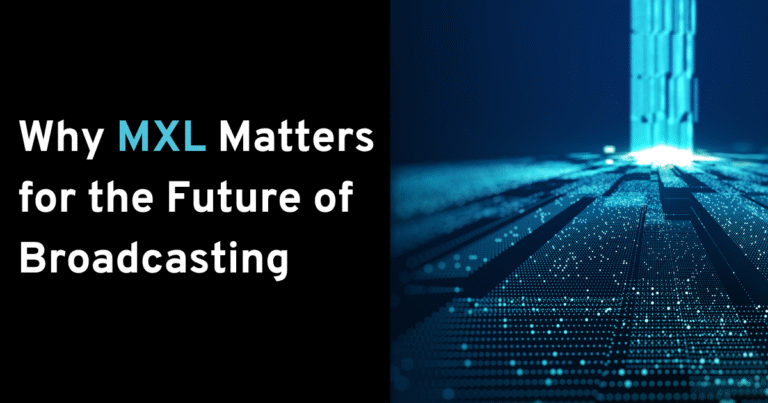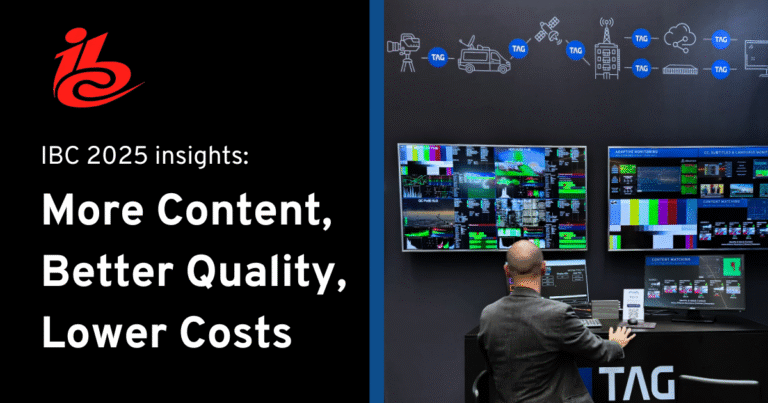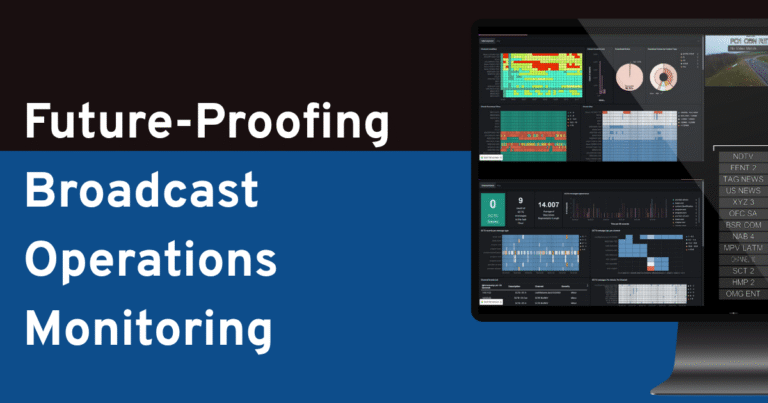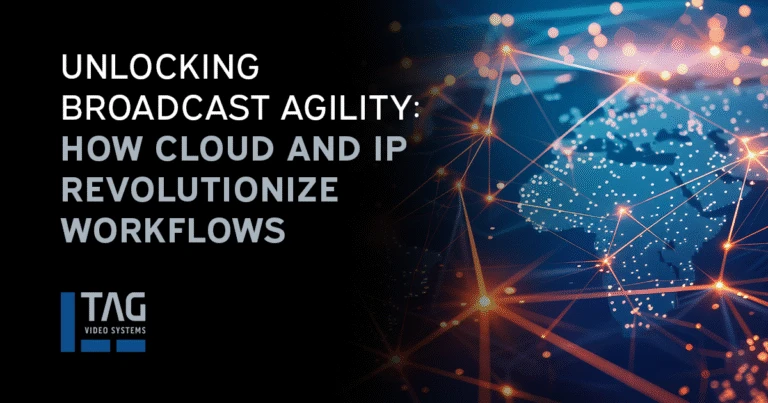Technological advancements, new service models, evolving consumer demand, and increased competition have transformed the media and entertainment industry over the past decade. Today, these factors continue to shape technical operations and business models, bringing added complexity to content production and delivery while increasing pressure to deliver high-quality viewer experiences with efficiency and economy.
Consumer demand for anytime, anywhere access to content, and more of it, is driving providers to deliver higher volumes of content across an increasing number of platforms and devices. The rise of streaming has made room for new players while giving established providers fresh opportunities to reach these consumers with content and advertising. Technological advancements such as the shift toward distributed edge systems and the adoption of cloud-based platforms and services are enabling necessary growth and change for content providers.
Still, despite migrating to software-defined IP and cloud systems, providers often fall back on legacy best-of-breed technologies that not only fail to deliver essential change but also reinforce operational silos that create interoperability challenges and add friction to the monitoring workflow. To address increasing complexity in media distribution and maintain high quality of experience using fewer resources, content providers are implementing unified monitoring, multiviewing, and probing across their operations and applications. Using this approach to enable efficiency at scale, content providers are streamlining operations and realizing greater productivity in ensuring the real-time media performance that supports high-quality consumer experiences.
Key Enablers of Efficiency
Addressing the full broadcast ecosystem, a software-based IP probing, monitoring, visualization, and analytics platform facilitates efficient realtime monitoring at scale while giving content providers the agility to launch new hardware, provision their workflows to run anywhere and on any server, and scale up and down while leveraging the latest advances in IT. Taking advantage of essential characteristics of a highly adaptable monitoring platform, content providers can leverage their existing tools and resources more broadly and use complementary tools and technologies to achieve even greater utility and productivity.
Complete End-to-End Monitoring
Monitoring for compliance and quality assurance at every critical point where the video is transformed or impacted by any distribution workflow components, end-to-end monitoring with a single solution allows content providers to scale efficiency horizontally. Employing realtime visualization, notifications, and alarms across all playout and transport signal types and elements, the content provider can extend and streamline monitoring across the organization, even as it expands. Deep probing of hundreds of parameters across all stream elements ensures that operators can identify errors in any type of source, anywhere across the network. As a result, the provider can verify that the content, including auxiliary data, is delivered without issues, delays, or latency and that the consumer experience remains pristine.
Realtime, Practical, Actionable Alarms
Real-time alerting notifies operators of immediate issues, such as a spike in traffic or a network outage, that could negatively impact user experience. Enabling identification and resolution of problems before they escalate, actionable alarms help to minimize downtime and preserve both revenues and the viewer experience. Ensuring that, amid the massive volume of data created by the video delivery network, important information is exposed in a useful way, alarms allow operators to be more efficient in responding to any issues. To achieve further efficiency, the content provider can integrate realtime alerting with network automation tools that together resolve common issues automatically.
Immediate and Deep Troubleshooting
Using deep troubleshooting to gather data from multiple probing points, a robust monitoring platform can efficiently detect errors across different formats, protocols, and vendors. Then, navigating through relevant data points collected and presented to them via open-source data management tools and analytics, engineers can make a proper, well-informed diagnosis of the issue. They can address the full ecosystem more efficiently, using metrics to measure performance across all signals to correlate, identify, and recover from errors; optimize workloads for maximum performance; and help transmit interoperable signals. Live access to all media performance data supports not just analysis and visualization, but also tasks such as prediction, forensics, SLA auditing, improvement baselining, and benchmarking, which further enhance efficient, proactive signal management.
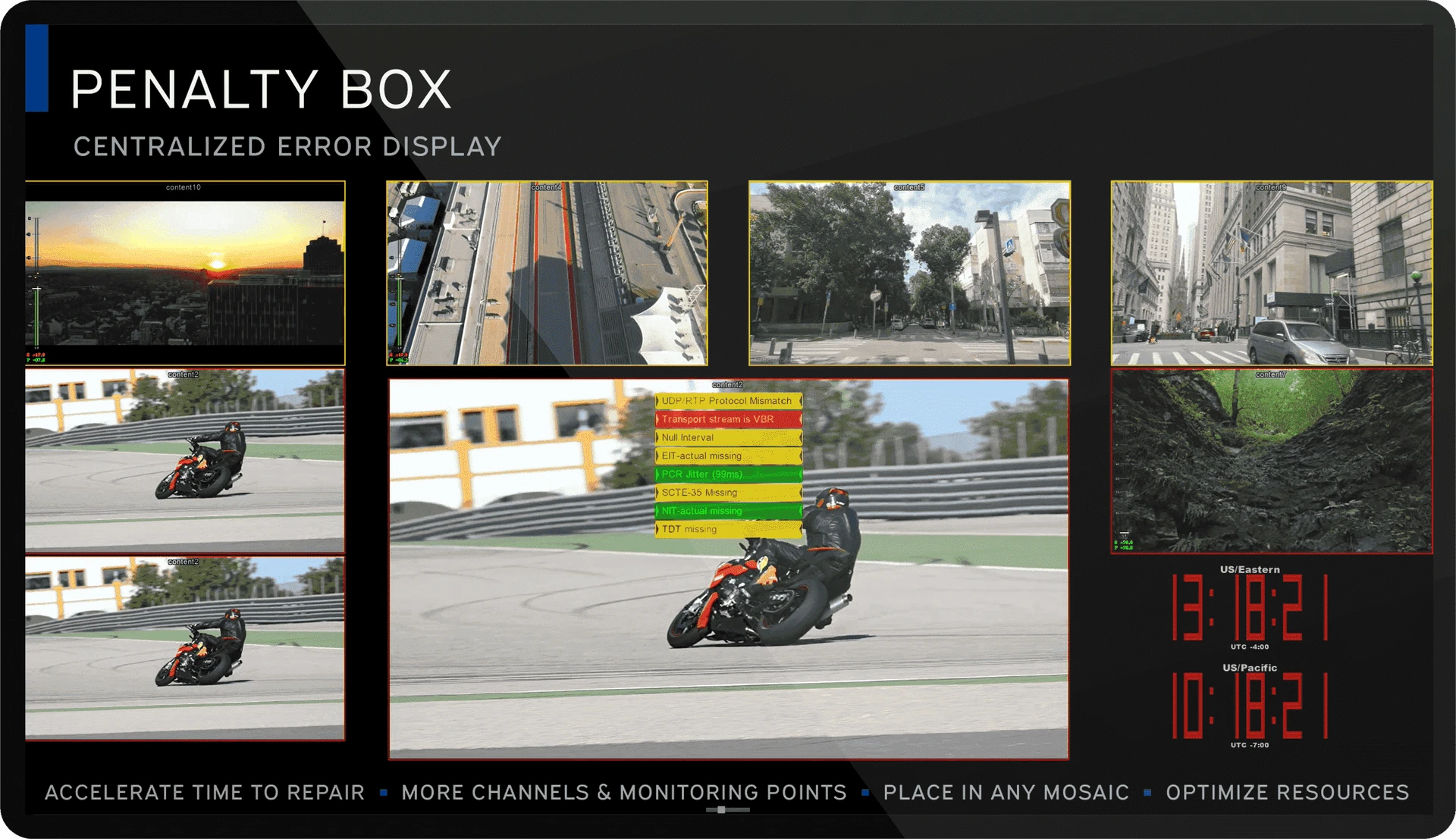
Extensive Analytics
Customizable reporting and analytics enable better SLA compliance, allow engineers to visualize performance and quality trends over time, and support more effective post-mortem analysis. Pulling comprehensive data such as raw metadata, descriptive content information, and incident details from the monitoring system, these reports supply the real-time and time-trending analysis necessary to make informed decisions. Integration with technologies including business intelligence tools, open-source data analysis tools with AI capabilities, and other analytics and visualization systems can drive further efficiency gains in the production, processing, and delivery aspects of a content provider’s workflow.
Streamlined Operation
Operators and engineers often monitor a high volume of streams or channels across a variety of platforms, formats, protocols, and codecs, with stream variations often multiplying the total by a factor of tens, even hundreds. Probing multiple channels automatically to identify exceptions to expected behavior, monitoring by exception allows operators to monitor multiple channels more efficiently. Round-robin visualization of multiple path nodes simplifies monitoring across fewer displays, and for large-scale applications, an intelligent “penalty box” consolidates and centralizes identification of potentially problematic channels for rapid review. Adaptive monitoring tools allow operators to prioritize channels, enhancing the benefits of monitoring by exception and helping to ensure critical errors are addressed before they negatively affect the viewer experience. When monitoring nodes are run only when and where needed, the content provider can reduce its processing burden and handle many more channels with less labor and fewer compute resources.
Hybrid Deployment Support
The cloud brings scalability, better access to AI- and ML-driven automation, and other valuable strengths to media workflows, facilitating improved productivity and fostering swift innovation. For this reason, many providers are mixing cloud resources with existing on-prem hardware to take advantage of transformational efficiency and agility. Innovative monitoring systems offer built-in capabilities that support on-prem, cloud, or hybrid workflows, reducing operational costs associated with rapid industry changes. Built on software and accessible through flexible licensing, these systems can scale from a single multiviewer with a handful of sources to thousands of sources and hundreds of independent multiviewer mosaics.
Transformational Impact Across Monitoring
Leveraging these characteristics of unified software- and IP-based monitoring across their operations, content providers can maximize resource utilization; scale to accommodate peaks and valleys in demand for content and services; adapt quickly to embrace new technologies and business models; and, ultimately, ensure that quality of experience addresses consumer expectations. Realizing increased monitoring efficiency across their operations at scale, they can overcome the complexity of modern media operations to deliver the highest quality customer experience at the most advantageous return.
